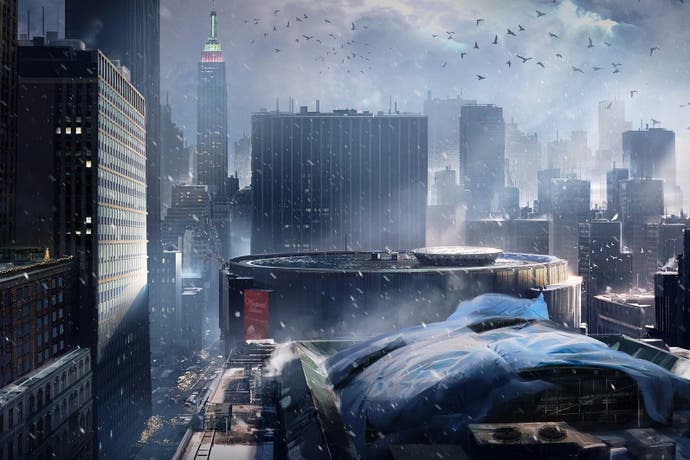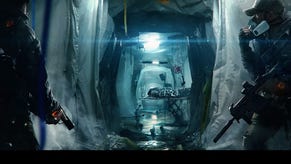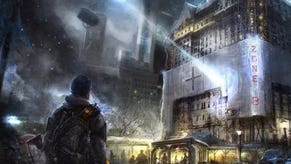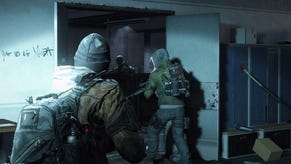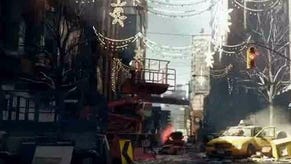Tom Clancy's The Division - Beginner's tips, skill trees, zones and enemy types
Our beginner's guide to understanding the fundamentals of skill trees, zones, levelling systems and enemy types in The Division.
Welcome to Manhattan. It's not quite the tourist destinaton it once was and it can be a little overwhelming to newcomers (although Midtown was always awful), so here's a rundown to get you started with how the world of Tom Clancy's The Division works. As we uncover more about the game these will be covered in detail on their own pages.
How zones work in the game
The game world is split into two main sections: the main game area, and the Dark Zone. Each of these these is then further split into Districts, with each district featuring enemies that fit within specific level ranges.
The entire map is unlocked right from the start but the enemies within each district effectively determine when you can visit them. As a general rule of thumb, you can survive a fight against enemies three or four levels above you, but venture much further beyond that and certain death awaits.
The main game area contains the starting hub, your Base of Operations, a number of Safe Houses, and is the starting point for where the story unfolds. Unless you specfically join a group at a Safe House you'll be on your own and you won't run across other players in this area - your Base of Operations is a unique instance all of your own.
The Dark Zone is The Division's player-versus-player (PVP) area, so in addition to threats from NPCs you also have other human players to contend with. What happens here doesn't impact the plot directly, but the loot you can uncover inside may prove invaluable to your more game-driven adventures.
Here's a quick rundown of each District in the game, and the level you should aim to be before you go poking around:
Districts
- Brooklyn: 1-3 (tutorial area only)
- Camp Hudson: 3-4 (starting area, vendor, JTF, noticeboard)
- Chelsea: 2-4
- Pennysylvania Plaza: 3-5 (Base of Operations)
- Hudson Yards: 5-9
- Garment District: 5-9
- Tenderloin: 9-12
- Times Square: 10-13
- Hell's Kitchen: 10-13 (vendor, JTF)
- Clinton: 14-15
- Flatiron District: 15-16
- Gramercy: 16-18
- Stuyvesant: 18-19
- Kips Bay: 20-23
- Murray Hill: 24-26
- Turtle Bay: 27-28
- Midtown East: 28-30
How levelling works in The Division
There are three levelling systems in the game - Character Level, Dark Zone Rank, and Base of Operations - and they combine together in a slightly different way to traditional RPGs - understanding how these all work together is crucial for survival.
Character Level affects the gear and mods you can equip, it determines which areas you can safely explore without being seriously outmatched, and it also affects your base stats. Firearm determines the amount of damage you can deal with your weapons, Stamina determines how much damage you can take, and Electronics governs the effectiveness of your character's Skills.
As you progress through the game, you'll want to mix and match these attributes to best suit your personal playing style, but in the early stages you're likely to want to keep them relatively well balanced between one another.
Your Dark Zone Rank determines what equipment is available from Dark Zone vendors and restricts access to certain types of loot within the zone. Your rank increases as you defeat enemies and agents inside the zone, but will drop if you die. For this reason, it's really important not to stray into areas that are beyond your character's capabilities.
Your Base of Operations levels up as you complete missions and locate personnel. Upgrading specific parts of it unlocks Perks and Skills in the three Skill trees.
Skill trees available in the game
Firearms
Each point in the Firearms attribute increases your weapon damage by approximately 1% of its base value. Beyond the raw DPS figure, the following stats will be modified by your choices of Weapon, Gear and Mods:
- Critical hit chance
- Critical hit damage
- Headshot damage
- Accuracy
- Stability
- Range
- Reload time
- Reload speed bonus
- Damage bonus (split into all weapons, assaut rifle, light machine gun, marksman rifle, pistol, shotgun, and sub machine gun categories)
- Damage to Elites
- Enemy armour damage
- Threat
- Health recovery on kill
Stamina
Each point in Stamina increases your health capacity by 30. As with Firearms, a number of secondary factors from Gear and Mods affect your survivability:
- Armour (10 armour points are worth just over 1% damage reduction)
- Health regenration
- Protection from Elites
- Damage resistance (split into all non-environmental, exotic, bleed, stun, burn, disorientation, EMP, and shock categories)
- Stamina bonuses also affect some aspects of exploration:
- Virus filtering
- XP bonuses (divided into kills, headshots, and Dark Zone)
- Increased loot drops
Electronics
Each point in Electronics increases your Skill power by 10, governing how effectively and often you can use Skills. On top of the base stat, Skill cooldown and Signature cooldown can be improved with appropriate Gear.
Enemy types and Factions
There are three basic types of NPC enemy in the game:
Standard enemies - Essentially cannon fodder, they have a single health bar and are easily dealt with.
Veterans - These guys have a secondary armour bar which needs to be depleted before you can actually cause them damage, so armour piercing mods are useful here.
Elites and Named Enemies - Like Veterans, Elites are equipped with armour, but they're generally tougher and smarter into the bargain and often have a special attack or two up their sleeves. Fortunately, they also tend to have a weak spot which can be exploited.
Each of these enemy types may have a class assigned to them which will be marked with an icon next to their level indicator. Lightning means they're going to rush at you and try a melee attack, a targeting reticule means a sniper, a grenade means they'll be throwing things at you, a wrench means they'll deploy turrets, and enemies sporting a cross are medics. These should be taken out first, as they'll heal themselves and their comrades, turning what might otherwise be a simple fight into a protracted struggle.
If you stray into Districts that are beyond your level range you'll likely run into enemies which have a skull icon next to their health bar. That icon is there for good reason, and is a sign that either you should run away or that you're about to die...
Enemy Factions
Rioters are the default enemy type, and they're armed with fairly standard weapons. They are also less likely to be wearing armour, and generally don't do anything unexpected in battle.
The Rikers are escaped convicts, so they're a little tougher built than the rioters, but still use fairly basic weapons, They're more likely to try and flank than rush straight at you.
Cleaners are middle-tier enemies and carry flame throwers in addition to the normal arsenal. They tend to move more slowly than the other types, but flamethrowers can pass over or around cover at close range and will apply a Burning effect - avoid getting up close and personal if you can.
Lats Man Batallion [LMB] - these guys wear armour and good quality Gear, carry powerful weapons, are more likely to have medics and snipers and their squad, and are generally a lot tougher and smarter than everyone else. Approach with caution.
Your Base of Operations and The Dark Zone
The Base of Operations your home away from home, and where most of your missions will be assigned to you. As you progress through the plot you'll be able to upgrade each of the three Wings to unlock new Skills, Talents, and Perks. The Dark Zone is the PvP area of Tom Clancy's The Division. We'll have plenty of guides for you on this fascinating section of the game once we've had a chance to fully explore it.
- The next part of our guide explains how to get started with the Base of Operations in Tom Clancy's The Division.
- You can find the rest of our Tom Clancy's The Division guide from the index page.
